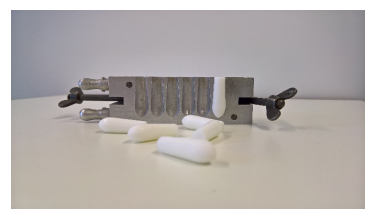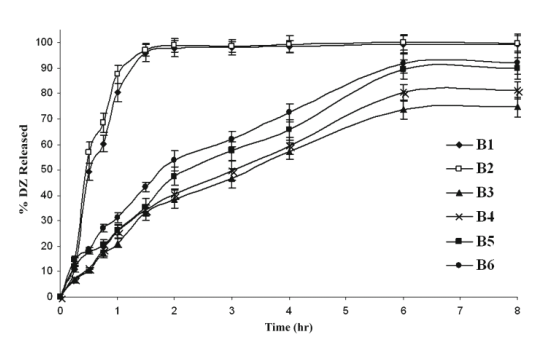 CD Bioparticles is a leading manufacturer and supplier of various drug delivery products, including metal nanostructures, biomacromolecules, synthetic polymer and biopolymers and lipid system, for R&D and commercialization in a variety of application areas. We also have developed mature technology platforms for drug delivery, such as inorganic nanomaterials, biomacromolecules, polymeric and lipid system. In addition, we can offer a wide range of custom services including drug delivery nanoparticles formulation, bioparticles analysis and characterization, and drug targeting strategy. We are delicated to providing the most comprehensive list of products and fit-for-purpose custom analysis and synthesis services to academia as well as industrial researchers and assay developers all around the world. One of our focus areas is rectal route delivery which is defined as the administration of pharmaceutically active agents absorbed by the rectum's blood vessels to obtain local or systemic effects.
CD Bioparticles is a leading manufacturer and supplier of various drug delivery products, including metal nanostructures, biomacromolecules, synthetic polymer and biopolymers and lipid system, for R&D and commercialization in a variety of application areas. We also have developed mature technology platforms for drug delivery, such as inorganic nanomaterials, biomacromolecules, polymeric and lipid system. In addition, we can offer a wide range of custom services including drug delivery nanoparticles formulation, bioparticles analysis and characterization, and drug targeting strategy. We are delicated to providing the most comprehensive list of products and fit-for-purpose custom analysis and synthesis services to academia as well as industrial researchers and assay developers all around the world. One of our focus areas is rectal route delivery which is defined as the administration of pharmaceutically active agents absorbed by the rectum's blood vessels to obtain local or systemic effects.
The rectal route that can be applied for local or systemic drug delivery belongs to the transmucosal routes of drug delivery and thus can bypass the first pass metabolism. Compared to oral and parenteral routes, the rectal route is ideal for pediatric and geriatric groups, especially for those who cannot take oral drugs due to nausea, vomiting or unconsciousness. Moreover, it can also avoid pre- and post-operative systemic infections.
Although the rectal route is not the first choice of drug administration, it is a good alternative in some certain cases as mentioned above. Rectal route can offer several advantages for drug delivery:
However, rectal delivery possesses some disadvantages as well:
For example, when we deliver protein or peptide drugs through rectal route, this route is with low levels of protease activity and can avoid the first pass metabolism. But if there are no absorption enhancers, the bioavailability of therapeutic proteins or peptides in this route would be low. Researchers have studied various absorption enhancing adjuvants (amino acid enamines, salicylate and its derivatives, fatty acids, etc.), surfactants, mixed micelle, and cyclodextrins to overcome above problems.
In addition, to modify the formulation properties, novel methods have been designed to offer better control over spreading, retention and/or release of the drug via different formulation strategies. Many researches have been done in the rectal drug delivery about the micro- or nanoparticles used to achieve site specific and controlled drug delivery to the colorectal area. In these articles, nanoparticles applied into a suppository base or a gelling polymer were used as a vehicle or release modifier. For example, Siczek, et al. found that if they applied silver-coated glass beads for the localized treatment of inflammatory bowel disease, there would be about 50% of the drug release within 0.5 hour after drug delivery (Figure 1). Abdelbary and Fahm proved that diazepam had been effectively delivered using solid lipid nanoparticles (SLN) and a conventional suppository base (Figure 2).

Figure 1. The obtained course of the chemical composition of the silver layer on the sample bead (left) and the corresponding atomic and weight counts (right) at 24 h of erosion in the phosphate buffer. (Siczek, K., Fichna, J., Zatorski, H., Karolewicz, B., Klimek, L., & Owczarek, A. (2017). Development of the rectal dosage form with silver-coated glass beads for local-action applications in lower sections of the gastrointestinal tract. Pharmaceutical Development and Technology, 23(3), 295–300)

Figure 2. Release profiles of diazepam from suppositories in 7.4 phosphate buffer at 37±0.5°C; each is the mean of three experiments. (Abdelbary, G., & Fahmy, R. H. (2009). Diazepam-Loaded Solid Lipid Nanoparticles: Design and Characterization. AAPS PharmSciTech, 10(1), 211–219)
CD Bioparticles is specialized in the development of drug delivery systems and customizing nanoparticles for drug delivery utilizing our core technologies. With our high-quality products and services, the efficacy of your drug delivery can be tremendously improved.
We offer custom synthesis of polymer microspheres and nanoparticles. Clients may select the material type, particle size, size distribution, color dye, fluorescent dye, and/or surface functional groups such as carboxyl or amine groups. We also encapsulate proteins, steroids, ligands, nucleic acids, drug molecules, and other agents. Additionally, coating the surface of your microspheres or nanoparticles with ligands, oligonucleotides, and other agents are available to us.
References:
1. Purohit, T. J., Hanning, S. M., & Wu, Z. (2018). Advances in rectal drug delivery systems. Pharmaceutical Development and Technology, 1–11.
2. Lakshmi Prasanna, J., Deepthi, B., & Rama Rao, N. (2012). Rectal drug delivery: A promising route for enhancing drug absorption. Asian J. Res. Pharm. Sci, 2(4), 143-149.
1. Download the template.
2. Enter product information on the template (maximum number of products: 200).
3. Load the file using selector below.
1. Download the template.
2. Enter product information on the template (maximum number of products: 200).
3. Load the file using selector below.